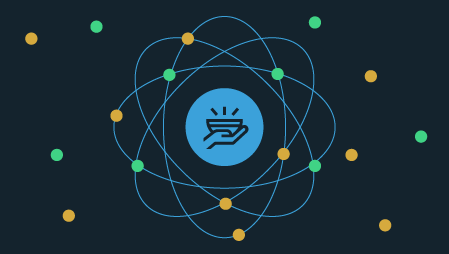2019 was an exceptional year for the Internet of Things (IoT). Not only had the count of connected devices surpassed the anticipated numbers (9.3 billion), the technology reincarnated a trustworthy sentiment among enterprise-grade consumers. Consequently, that makes it the most important technology from the web 3.0 suite largely because it gained from the COVID-19 pandemic tenure. While on one side, the FMCG industry grew by multi-folds, the demand for IoT enabled Industrial management elevated the technology’s expected market cap to 243 Billion USD in 2021 (CAGR – 13%).
To put it simply, the internet of things is the network of connected devices (things) that communicate with each other through embedded sensors while contriving all analytical data to a centralized analytical dashboard. Consider a wrist smartwatch that can calculate your health readings (heart rate etc.).
This device could be connected to your physician’s software so that instantaneous health updates are streamed automatically. Similarly, a vehicle insurance provider is remote monitoring your driving patterns and thereby evaluating your chances of claiming insurance.
These are just a few of the use cases that had gained attestation years ago. Today, IoT means more. With the onset of Industry 4.0, IIoT (Industrial Internet of Things) is exhaustively used to lessen manual dependency and make smarter predictions.
Nevertheless, IoT is here to stay and improvise. The existing landscape holds vast potential to evolve with IoT enabled management processes.
IoT enabled management is the systematic deployment of operations through device authentication, procurement, configuring, monitoring, and maintaining. This is essential because currently, the IoT consumers whether individual or enterprise struggle with deteriorating performance either due to defective manufacturing or device obsolescence. This further produces inconsistencies in handling large networks. With such a managed process in place, businesses especially manufacturers will benefit from a truly responsible and predictable infrastructure.
Secure and swift on/off-boarding of new devices to the network
Adding new devices to the IoT network may get riskier if a security protocol isn’t guarding the activity. This means validating the authority and configuration compliance of every device must be performed through an industrial-grade remote device management tool. For example, registering and authenticating new nodes through a web interface to establish secure communications with the base stations.
Only after the new node is certified to have completed the on-boarding process, it would be allowed to join the network. At the same time, if a node requires troubleshooting or is no longer needed in the network, it must be easily removed through an off-boarding process.
Fractioned Management of the IoT Network
Device management solutions enable you to divide the network into different fractions or groups and implement exclusive policies for devices falling in each. Not only does it make it quicker to operate and monitor but also ensures accurate compliance with security regulations. These groups can be created based on a particular location, building, and departments. For example, installing a firmware update directly for a group of devices in a particular fleet of vehicles is more efficient than doing it for the entire network.
What are the benefits of the IoT for businesses and consumers?
Production facilities are plagued with a series of safety concerns and risks. Given the fast-paced digitization through CRM, it is imperative that production lines are equipped with predictive systems that can drive device communication and therefore upscale the automation quotient of the facility. IoT provides the needed infrastructure and pulls the manufacturers out of conventional practice.
Easy remote device management
Remote monitoring is one of the most important pillars of IIoT and should be included in the suite across all solutions. Since the uninterrupted operation of IoT devices is the basis, operations such as upgrades, reboots, factory resets, and patch diagnosis must be readily managed remotely. IoT management ensures remotely connecting and troubleshooting of devices through secured tunneling.
Pre-emptive Network Diagnosis and Troubleshooting
As the IoT networks expand their reach, businesses must brace up for automating the monitoring of thousands of nodes spread across geographies. By leaving those unattended, the manual diagnosis will plague the entire network thereby causing critical disruption of services. With managed IoT networks, users seek instantaneous visibility data from individual nodes so that identifying problem areas get easier.
For example, tracing issues such as defective hardware, bugs in firmware or congested radio traffic is streamlined saving cost, time, and effort. In addition to configuring certain device settings, there may also be unforeseen operational issues and/or software bugs that you’ll need to address. To address them, you need to identify them in the first place.
Reduction in Operational Cost
Since predictive monitoring forms the basis of IIOT, manufacturers can reduce the downtime of the machines through advance notification of potential failovers. Therefore, it abbreviates the overhead IoT project cost estimation that usually increases due to extended repairing. Needless to say, such streamlined processing has a direct impact on power consumption and the overarching time-to-market metrics. Going forward, manufacturers can increase their production capacities and roll-out large scale deployments.
The Future - IoT will go limitless
Every space and corner where the internet goes, IoT networks will tag along. The idea is to orchestrate a smart network of IoT devices that enables the society to not only better tackle the contingencies of pandemics such as COVID-19 but also make existing business operations much more efficient.




